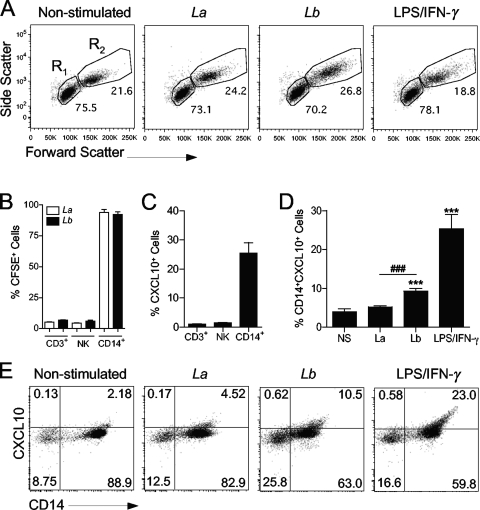FIG. 3.
Monocytes are the major producers of CXCL10 following L. braziliensis infection. Human PBMCs were isolated from healthy donors (n = 6) and infected with CFSE-labeled L. braziliensis (Lb) or L. amazonensis (La) promastigotes at a 5:1 parasite-to-cell ratio for 24 h. (A) Representative forward scatter versus side scatter plots of PBMCs cultured under different conditions are shown. Gates used to analyze lymphocytes (R1) and monocytes (R2) are indicated. 50K, 50,000. (B) CFSE intensity was used to determine the infection rates among T lymphocytes (CD3+), NK cells (CD3− CD56+), and monocytes (CD14+ cells within the monocyte gate). (C) CXCL10 production in different cell types in response to LPS/IFN-γ (100 ng/ml each) stimulation was assayed by FACS. (D and E) Intracellular CXCL10 in infected monocytes (CD14+ CFSE+) was measured by FACS. Values that are statistically significantly different (P < 0.001) between the compared groups are indicated (###). Values that are statistically significantly different (P < 0.001) between the nonstimulated control and infected groups are indicated (***). Numbers shown in panel E represent the percentage of cells in each quadrant.

